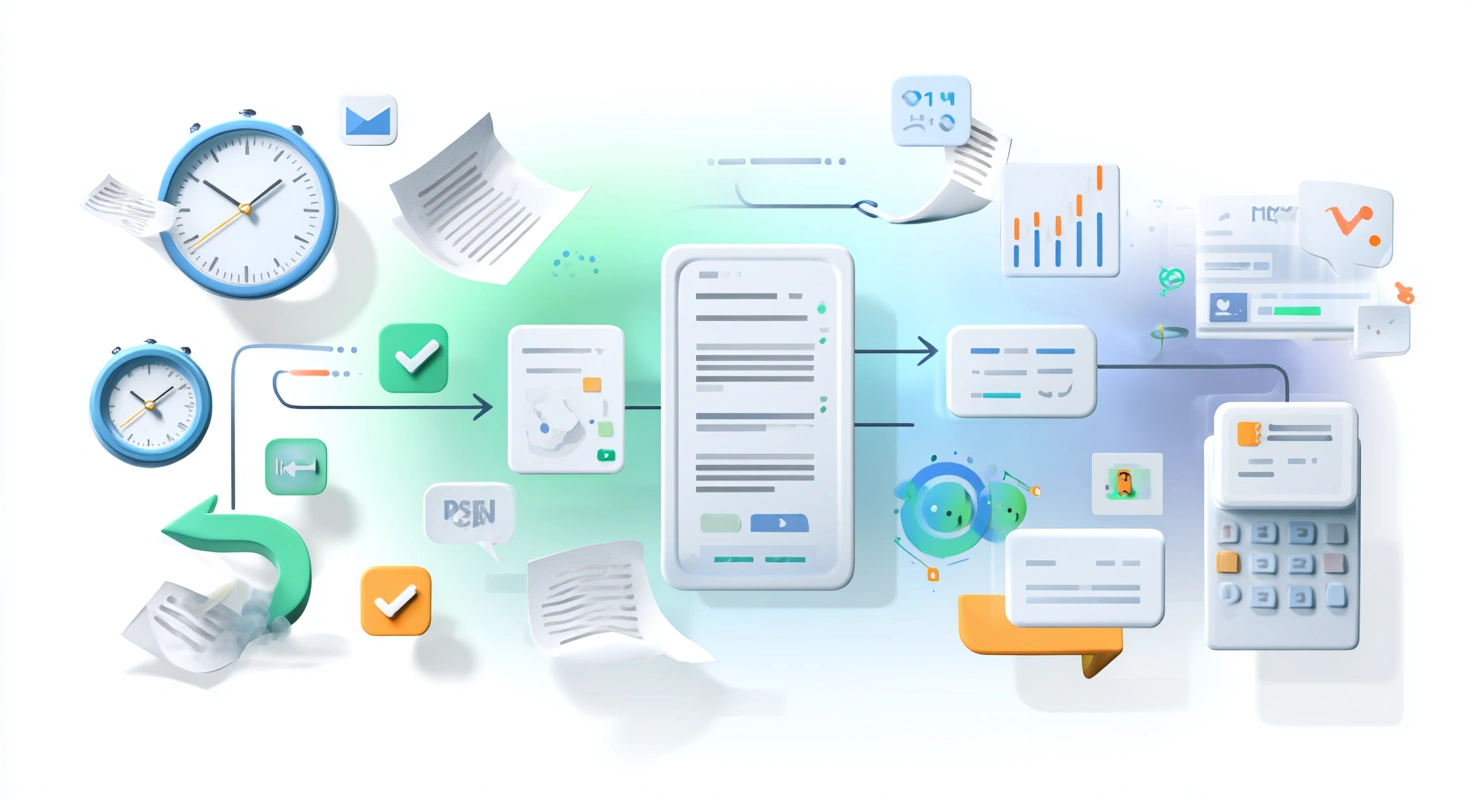It is difficult to say if your team's performance matches the ever-evolving expectations of thousands of inbound sales calls, customer service inquiries, or outbound calls with prospects.
Customers or prospects may become agitated when your calls are unnecessarily long. It reflects poorly on your company & can lead to damage to your brand reputation, lost sales calls, and lost customers.
An ideal way to solve this problem is establishing call quality parameters–a step in the right direction, mainly to ensure call center quality assurance.
From sales, customer services & other professionals who interact with your customers directly, their efforts directly impact your business.
But how do you ensure quality assurance & compliance with your standards and provide your team with the support and training they need in real-time?
This article will help you learn about a few significant ways to assess call quality parameters aligning with your business goals. We will cover:
1. Understanding Call Quality Parameters
- Sales Calls
- Customer Service
- Compliance
2. Call Center Quality Assurance Metrics
- Average Speed of Answering (ASA)
- First Call Resolution (FCR)
- Average Handle Time (AHT)
- Customer Satisfaction Score (CSAT)
- Net Promoter Score (NPS)
- Customer Effort Score (CES)
3. Benefits of QA Metrics
4. QA Metrics: Best Practices
Understanding Call Quality Parameters
Establishing call quality parameters for your team means you create call quality parameters that they should function within daily. For example, your contact center may have call quality parameters for the time to answer a call, transfer or hold times, and other factors.
Call quality goes far beyond this. No matter the call type, your team's message to your customer must be uniform and representative of your brand image.
Book a demo to improve your call quality parameters.
Sales Calls
Each call your sales team makes or attends to is a revenue-generating opportunity. Your sales team likely hears numerous rebuttals, objections, and various levels of interest.
While your top performers may tactfully handle many of these issues to secure the desired result, your sub-par performers may still have ample room for development and improvement.
The essential questions to ask are, is your sales team taking every reasonable step to boost their conversion rate? Are there other factors that could be addressed to increase their level of success?
After all, their listening skills, communication style & speed can affect customer satisfaction & business success.
Customer Service Calls
While your customer experience team regularly attends to calls covering the same topics, some calls have unique nuances. Training your team to respond to every call in a predetermined format is ineffective.
When customers get placed on hold repeatedly for excessive amounts of time, they may hang up even without resolving the issues.
Thus, this leaves a wrong impression on the customer & leads to lost sales, damages your reputation, and has other detrimental effects.
However, the right way to train your team effectively with many calls deviating from an expected structure or flow is to ensure they have the right solutions, answers, or suggestions to address every situation.
Compliance Calls
Your teams have been trained to manage calls through a structured script. In the process of adapting to the unique nature of each call, issues occur.
Some of your team members may react proactively, while others may respond in a combative way & make false statements to get over the issue. In this process, they may disclose confidential information or fail to provide necessary disclosures to customers.
These are compliance issues that impact the quality of the customer's experience. However, providing adequate training to the agents on handling stressful situations like these is a cost-effective way to provide your team with the support needed.
Call Center Quality Assurance Metrics
Despite the call type & purpose, staying on top of call quality and always looking at ways to improve it is the primary aim of every call center manager.
Contact centers that focus on measuring and improving their call quality metrics will find it easier to turn their existing customers into loyal advocates, stand out from their competition, and even find new customers when call quality is vital.

Quality assurance metrics are your company's data and facts to measure performance. Moreover, QA metrics can vary significantly by industry since they reflect performance defined by that industry.
QA metrics can be challenging, especially when it comes to tracking them. With the robust conversation analytics software, technology is working to make this challenge easier.
To help you easily navigate through the customer experience management journey, we've put together the most widely used metrics to measure call quality:

- Average Speed of Answering (ASA)
Rolled into the service level, Average Speed of Answering looks at call center quality assurance from the customer's point of view. In other words, it is the average time taken to answer the call.
The ASA rate of your call reflects how successful your customer experience and call center operations are. A sub-par score can result in poor customer satisfaction, decreased agent satisfaction & high abandonment rates.
- First Call Resolution (FCR)
First Call Resolution is a customer-centric metric that refers to your contact center's or agent's ability to fix customer queries on the first call, with no follow-up required.
The higher your First Call Resolution, the more satisfied your customers tend to be. This will result in efficient agents, better customer loyalty & significant profitability.
- Average Handle Time (AHT)
Average Handle Time is a call center QA metric that tracks the time customers spend on each call with your team–including the time when an agent picks up the phone until the time call is completed.
AHT is not a success metric. It helps assess efficiency for call center agents & sets performance benchmarks. Rushing agents to close queries rather than push them to resolve issues would decrease the AHT but deliver unhappy customers.
- Customer Satisfaction Score (CSAT)
The Customer Satisfaction Score is a metric that measures the degree to which a customer is satisfied with a specific product, transaction, or interaction.
The scale to measure this metric usually ranges between 1 – 3, 1 – 5, or 1 – 10. There is no standard definition of this metric. Most businesses calculate it as a reflection of how customer-centric the company is.
- Net Promoter Score (NPS)
A Net Promoter Score is a metric that measures the likelihood of your customers to recommend your business to others.
NPS differs significantly from related benchmarks, such as the customer satisfaction score. While CSAT indicates a customer’s general sentiment about your brand, NPS is the standard benchmark companies use worldwide to gauge their performance compared to their competitors.
- Customer Effort Score (CES)
This metric tracks customer experience in a distinguished way. Instead of directly asking the customers how satisfied they are, this metric tracks how much effort they had to put in along the way.
The ultimate aim is to reduce customer effort & maximize their satisfaction to turn them into loyal advocates of your brand.
Benefits of QA Metrics
Call center quality assurance metrics can provide various insights into a company's performance & future scope for improvement. These indicators can quantitatively help evaluate the quality and efficiency of your agents & methodologies.
Moreover, a significant aim of QA metrics is continually improving customer satisfaction. This will naturally lead to an increase in efficiency, call center productivity & reduction in costs.
- Call center QA metrics can help identify & diagnose any issues in time with call handling & call routing. Thus, leading to a significant improvement in customer experience.
- These metrics will also help you identify custom training needs for agents. As you continue to work with call center agents, you will keep refining & improving on training procedures to help build a better framework & enhance customer experience & agent efficiency.
- Operational inefficiencies don't just frustrate customers but also affect agent performance. As QA metrics help you establish areas for improvement and brainstorm better methods, your business will move towards operational excellence.
- As you keep improving your agent effectiveness & customer experience, your business efficiency will continue to upscale & costs will go further down.
Get on a call to unlock the benefits of QA metrics
QA Metrics: Meet goals consistently with best practices
It may be challenging to hit the right balance with call center quality assurance metrics, but consistency is the key. Doing the same things over and over again while constantly refining your methods to achieve better results is the best way to keep moving ahead.
Here's a list of the best practices to follow while dealing with QA metrics in a contact center:
- Once you begin tracking QA metrics dedicatedly, don’t stop. It is better to fail & then learn again than never to fail & never learn. The QA metrics will help you understand the data and your goals, thus making it easy for you to make significant improvements.
- Diversification can kick-start a struggling business or even extend the success of an already profitable business. It is wise to have more than one QA manager or expert to score calls, to get distinct perspectives on the big picture.
- A better way to go ahead is to use interaction analytics to provide automated scoring while the QA managers focus on providing coaching and training opportunities to the agents.
- There is more to a contact center than just audio. An omnichannel strategy encompasses the online and offline touch points of your brand & helps put less burden on the call center. A thriving omnichannel contact center must keep tracking email, chat, text, social media, and other metrics while holding them to the same quality standards as phone calls.
Make Conversation Data Count
The benefits of using QA metrics are incredible. While delivering a consistent message to customers that represent your brand effectively, the ability to monitor statistics to promote accountability can be one of the biggest drivers of success.
We at Convin aim to help you turn insights & data into actionable strategies that help you deliver a positive experience to your customers. We ensure you have everything you need, a single version of the truth, all in one spot!
Ready to turn your data into a meaningful strategy? Well then, hop on a software test drive.
This blog is just the start.
Unlock the power of Convin’s AI with a live demo.









.avif)